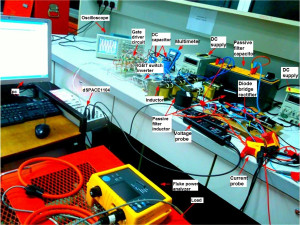5. Title: Three Phase Shunt Hybrid Active Power Filter Based on Modified Synchronous Reference Frame Theory

Abstract: Due to the increase in the number and application of nonlinear power electronic equipment a mass of harmonic current and reactive power flow into the network. It degrades the power quality of a power distribution system. An active power filter (APF) is an effective means to suppress those issues.To make the active filter cheaper, smaller and more practicable in industry applications, a hybrid configuration appears very attractive in power distribution networks. As series hybrid active filters are complex, unreliable and expensive, a shunt hybrid active power filter (SHAPF) topology is considered in this research because of its capability of attenuation, effective operation and simplicity. A hybrid compensator which is a combination of a three phase four wire shunt APF and a parallel passive filter has been presented in this research. The dominant lower order harmonics as well as reactive power can be compensated by passive elements whereas the active part mitigates remaining distortions. Modified phase lock loop based synchronous reference frame control is adopted here for active filtering system. Here, hysteresis current regulator is used to generate switching signals of APF and for maintaining the dc link capacitor voltage; a proportion-integral (PI) controller is introduced. The proposed hybrid line conditioning system can be quite effective for compensating harmonics, reactive power & neutral current under balanced, unbalanced, distorted and unbalance-distorted grid conditions. The simulated results obtained by MATLAB/SIMULINK power system block set are examined in detail for the validity of suggested approach. A laboratory prototype has been built on dSPACE1104 platform to verify the feasibility of the proposed SHAPF controller. From the simulation and experimental results the robustness of the proposed SHAPF controller has been proven
Last Update: 22/11/2022